Savage Arms 110 Carbon Predator in 6mm ARC
A Next-Generation Savage
feature By: Patrick Meitin | March, 24
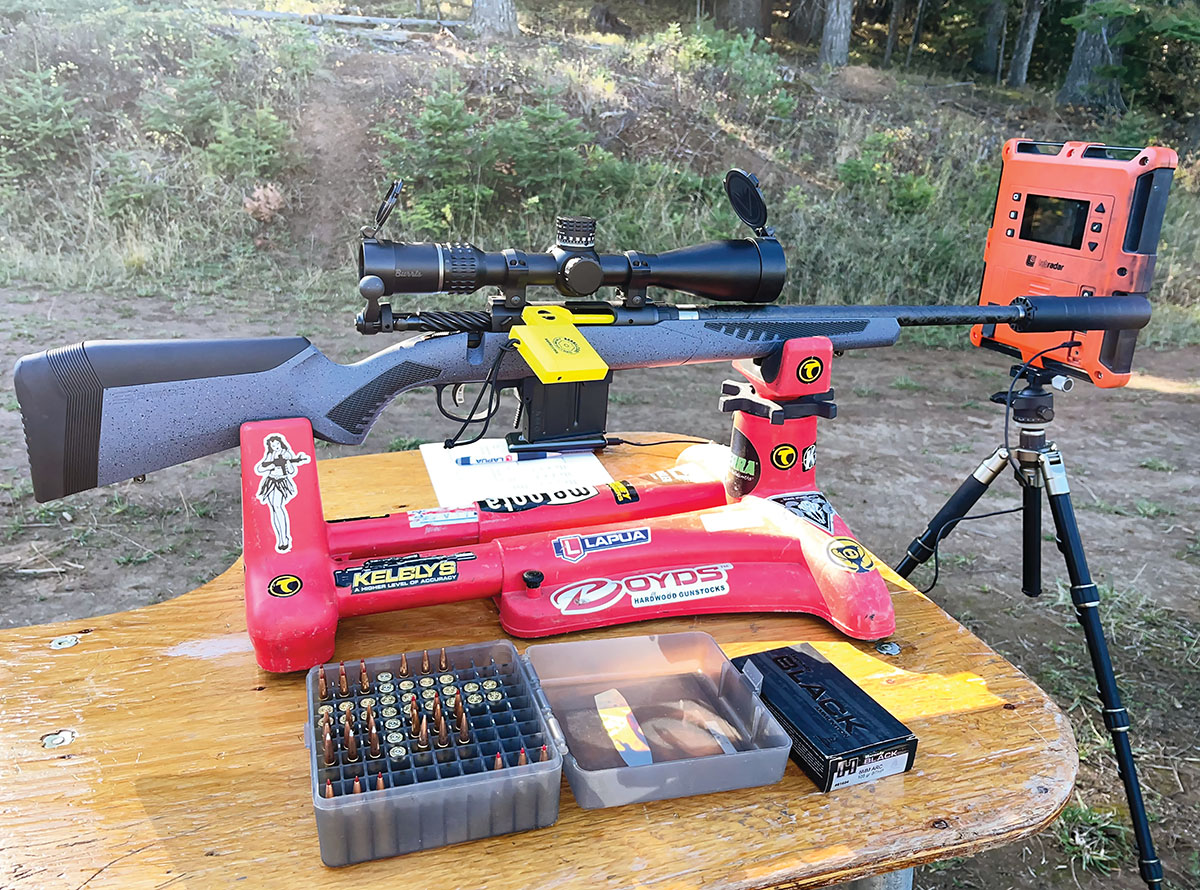
I have happily shot a good number of Savage 110 rifles over the years, from my favorite 223 Remington varmint rifle to a 7mm Remington Magnum used to shoot a once-in-a-lifetime oryx at 400-plus yards on the White Sands Missile Range of southern New Mexico after 27 years of applying for a tag. The 110 is Savage’s equivalent to the Remington Model 700, Winchester Model 70 or Ruger M77. It was first introduced in 1958 and quickly became a fixture in hunting camps across the nation. The 110 is a stout and reliable action that has developed a reputation for straight shooting despite the affordable price tag. Savage recently added a new member to the 110 lineup of bolt-action rifles, this one in a higher price range than the $400 to $500 Savage 110s I’ve handled in the past.
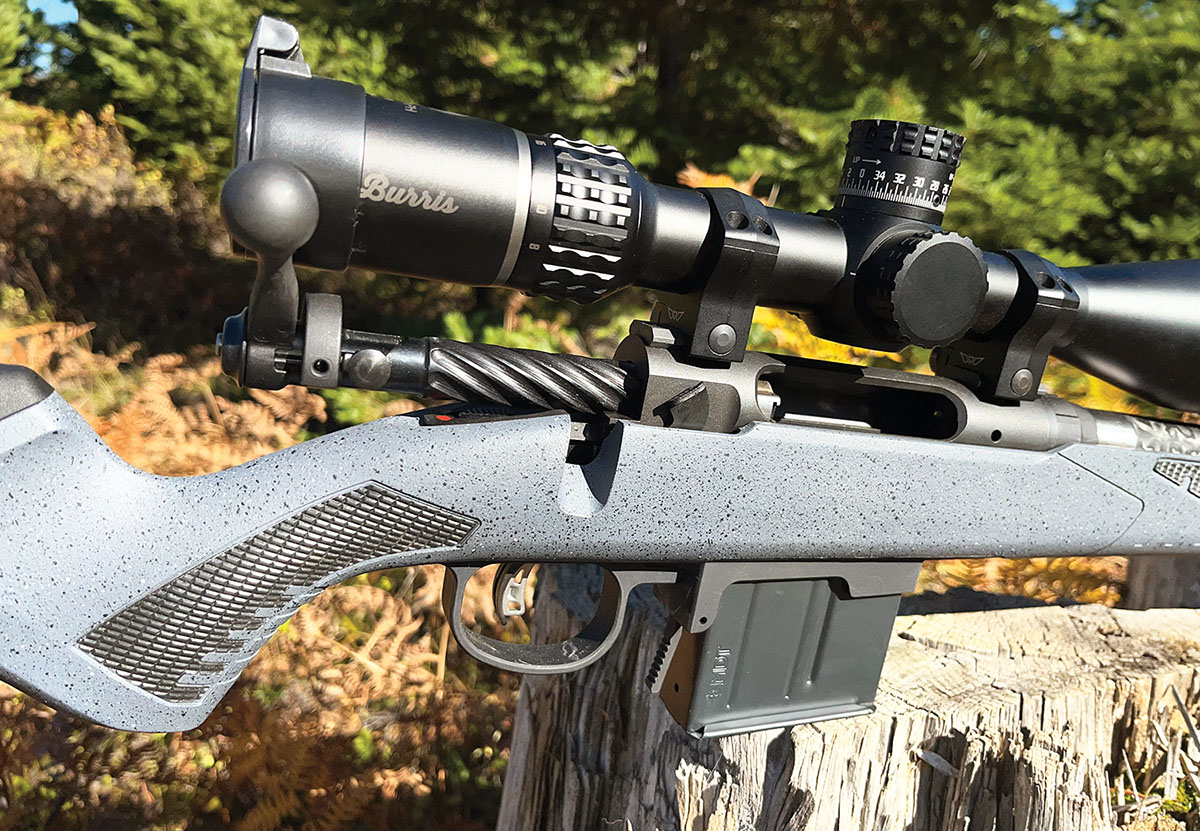
The new Savage Arms Model 110 Carbon Predator comes with a $1,699 manufacturer’s suggested retail price, but at a glance, it is easy to see this is no ordinary Model 110. I first laid eyes on the Carbon Predator at SHOT Show 2023 and knew I had to shoot one. Some rifles just have the kind of appeal that sparks immediate desire, and it doesn’t hurt that it was chambered in 6mm ARC, a round I’ve developed a great deal of affection for. The rifle’s appeal comes through a granite-textured synthetic AccuFit stock, its user-adjustable AccuTrigger, 10-round AICS-style steel detachable box magazine, and especially its threaded, 18-inch Proof Research carbon-fiber wrapped stainless-steel core barrel. The result is a fairly lightweight (7.33 pounds out of the box in the 6mm ARC tested here) and handy rifle made to withstand whatever Mother Nature can throw at it. I was anxious to see if the rifle shot as well as it looked.
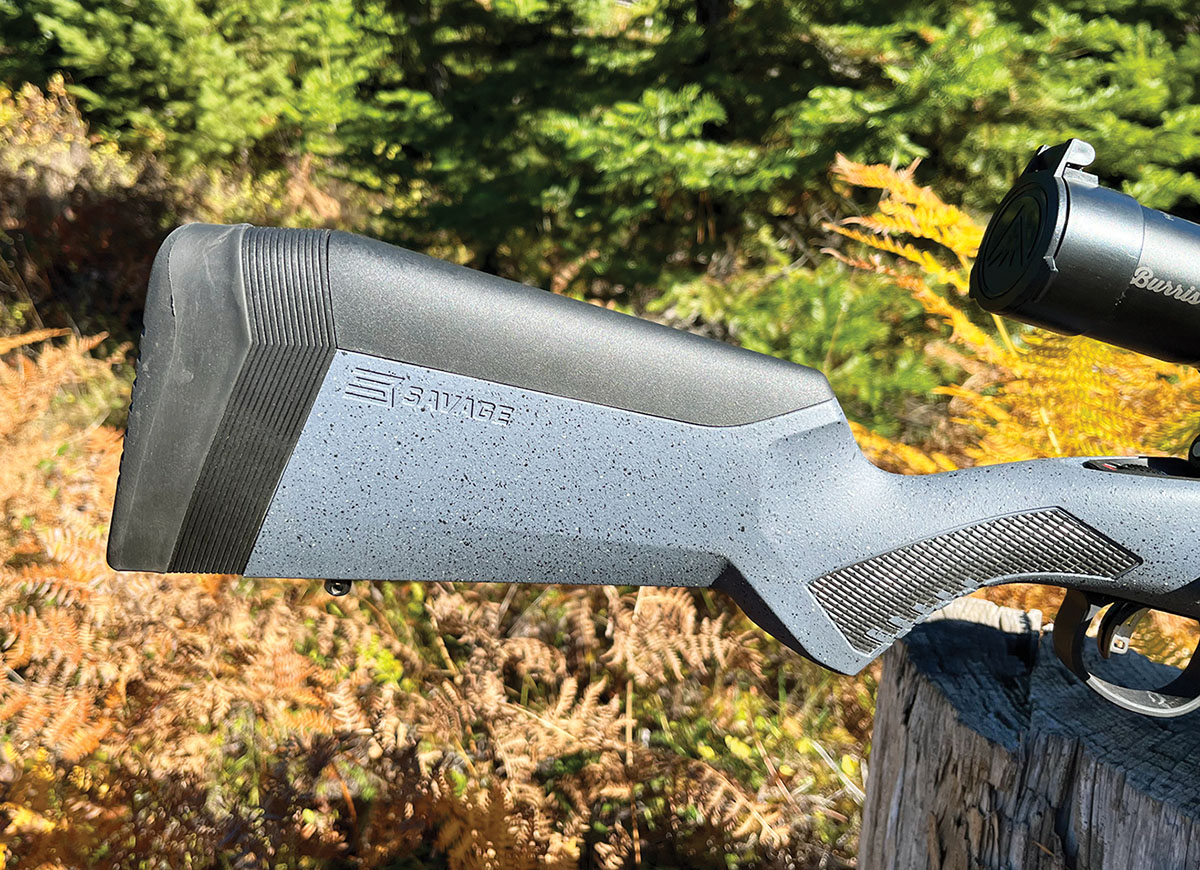
The new 110 Carbon Predator is offered in 223 Remington, 22-250 Remington, 6.5 Creedmoor, 300 Blackout, requisite 308 Winchester, and the 6mm ARC chosen for this review. Some of the other chamberings come with 22-inch barrels, but the 6mm ARC received an 18-inch tube. Choose a 6.5 Creedmoor and you have a choice of 18- or 22-inch barrels.
I conducted some of the first extensive load development on the 6mm ARC when it was fresh out of the gate and both load data and rifles were hard to come by. Since that time, it has become a popular option in many new rifles, including AR-15s. I have come to truly appreciate the 6mm ARC, one of those mild-mannered cartridges that hits well out of its weight class. Shooting a CMMG Endeavor 300 MK4 AR-15, I’ve used the ARC to collect a couple dozen wild hogs, including a 300-pound brute that dropped to a single shot, and a mature northern Texas whitetail taken at 268 yards. That buck minced a mere 10 yards after receiving a Hornady 103-grain ELD-X bullet before tipping over. I consider it the ideal youth or woman’s option, though I wouldn’t hesitate to hunt deer or hogs with the round again.
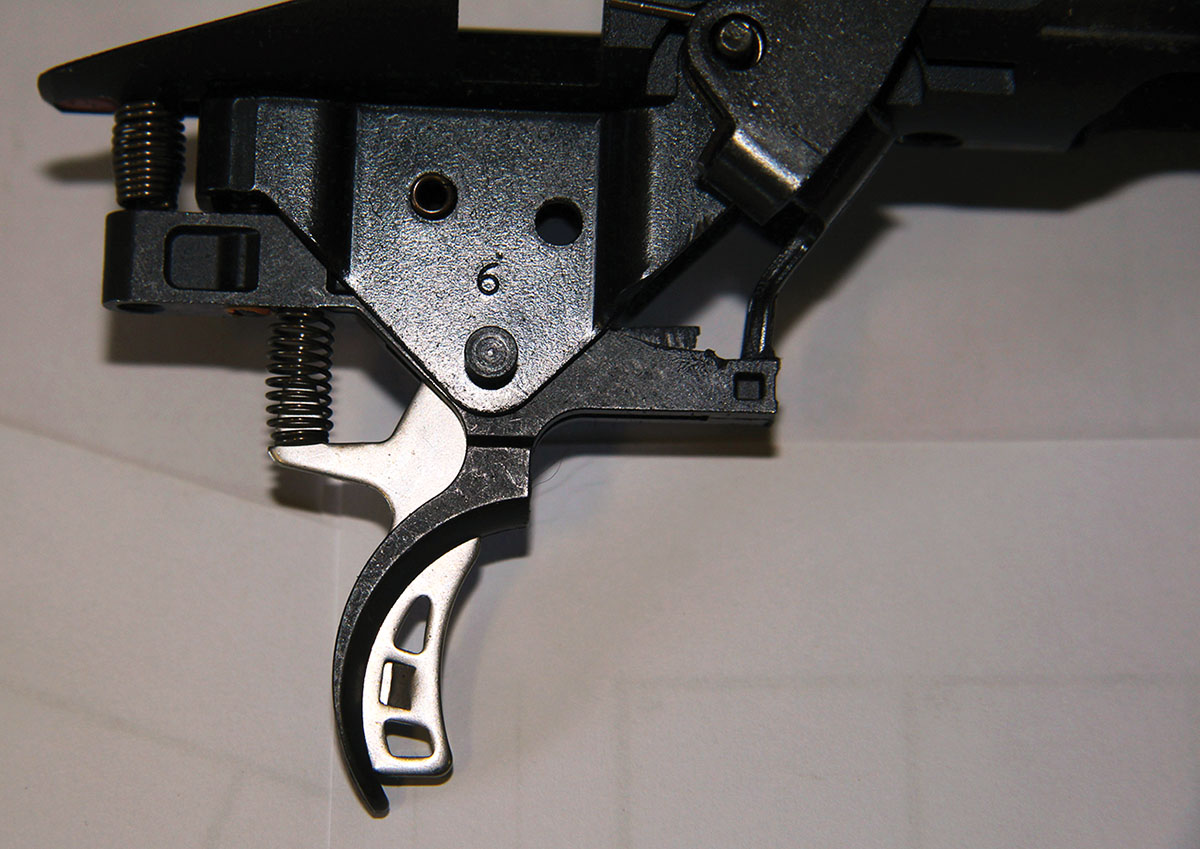
The Carbon Predator arrived with two-piece Weaver-style bases, so a new Burris Optics Veracity PH 4-20x 50mm was mounted in medium steel four-hole rings, which proved a perfect fit for height, while also allowing ample bolt clearance. I won’t get into too many details here, as I have covered this optic thoroughly in my “A Rifleman’s Optics” column in this same issue of Rifle magazine. Let’s just say it proved an ideal mate to the 6mm ARC’s long-range capabilities, including exposed turrets and a built-in, heads-up display, programmed through Burris’ ballistics app.
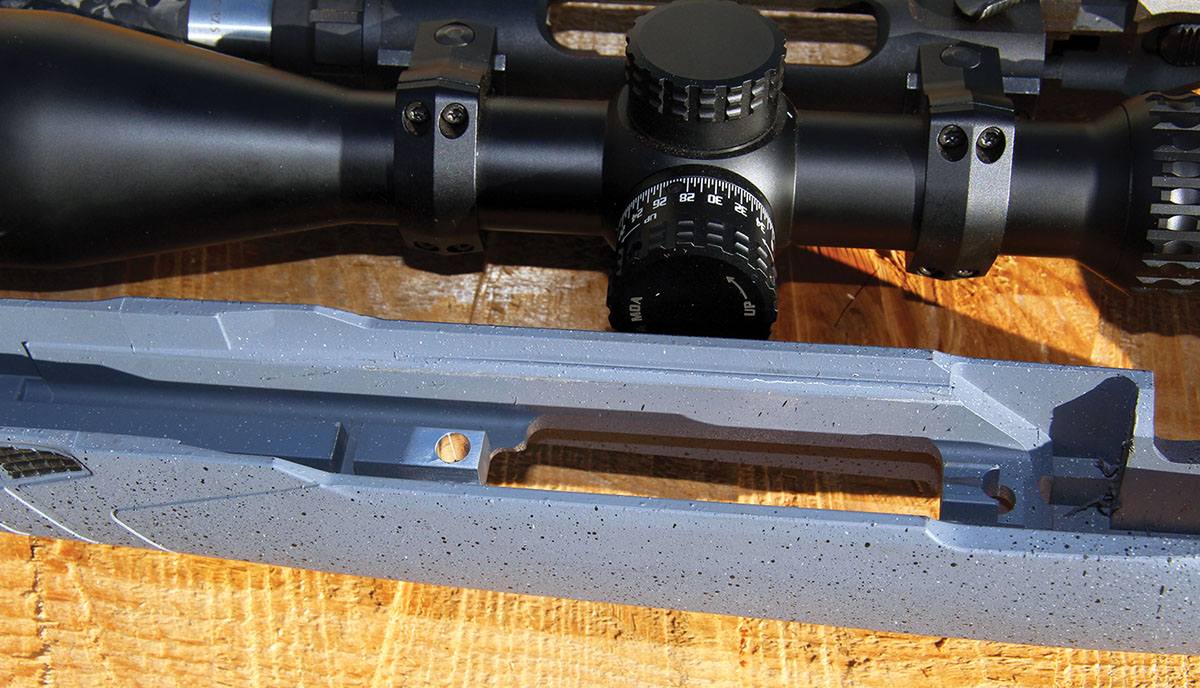
Savage’s AccuFit stock offers shooters many options for fit and comb height. Length of pull (LOP) can be adjusted from a short 12.75 to a fairly average 13.75 inches, allowing the same gun to fit youth or petite woman shooters, or an average man. At 6-foot, 5-inches tall, I of course, would like to see this taken to at least 14 inches, but I’m not exactly average. The length of pull is adjusted through three polymer spacers and various length Phillips-head screws. Five different polymer comb pieces are provided from fairly flat to nearly a ¾-inch rise. A front and three sets of L-shaped tabs click into the stock while the buttpad/LOP spacers are removed, locking firmly into place when the butt assembly is reinstalled. This allows for creating custom comfort and centering the eye precisely behind the scope’s ocular lens, no matter the objective size and resulting ring height.
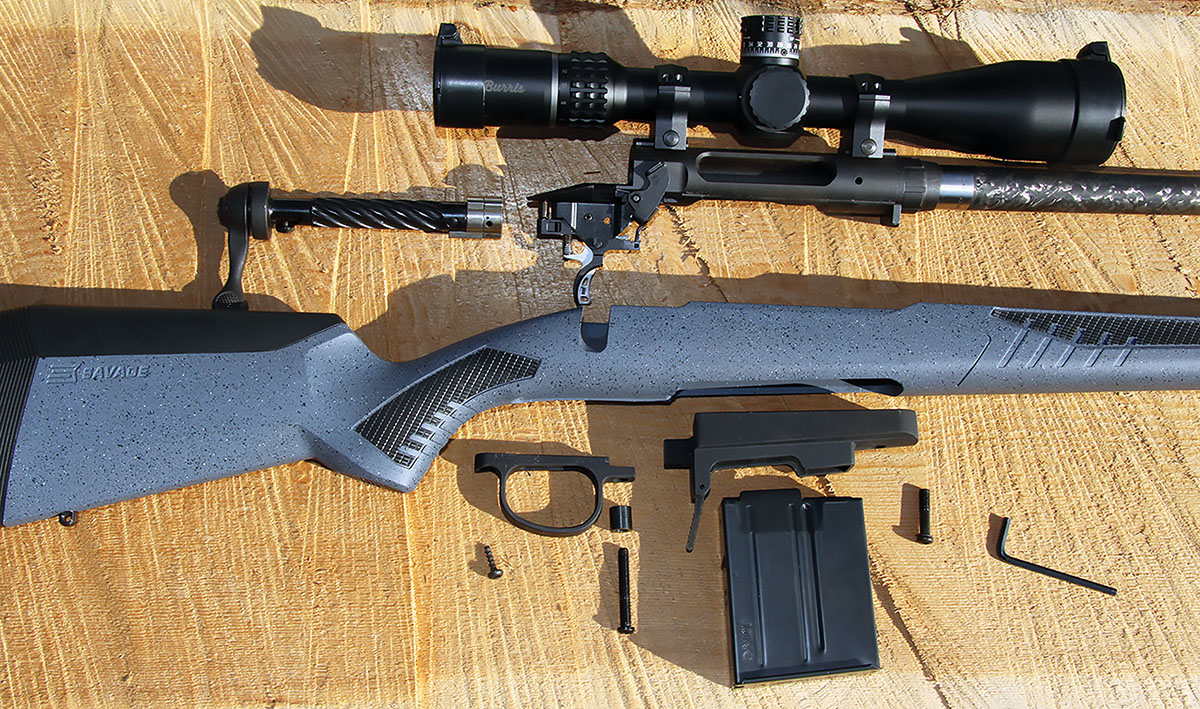
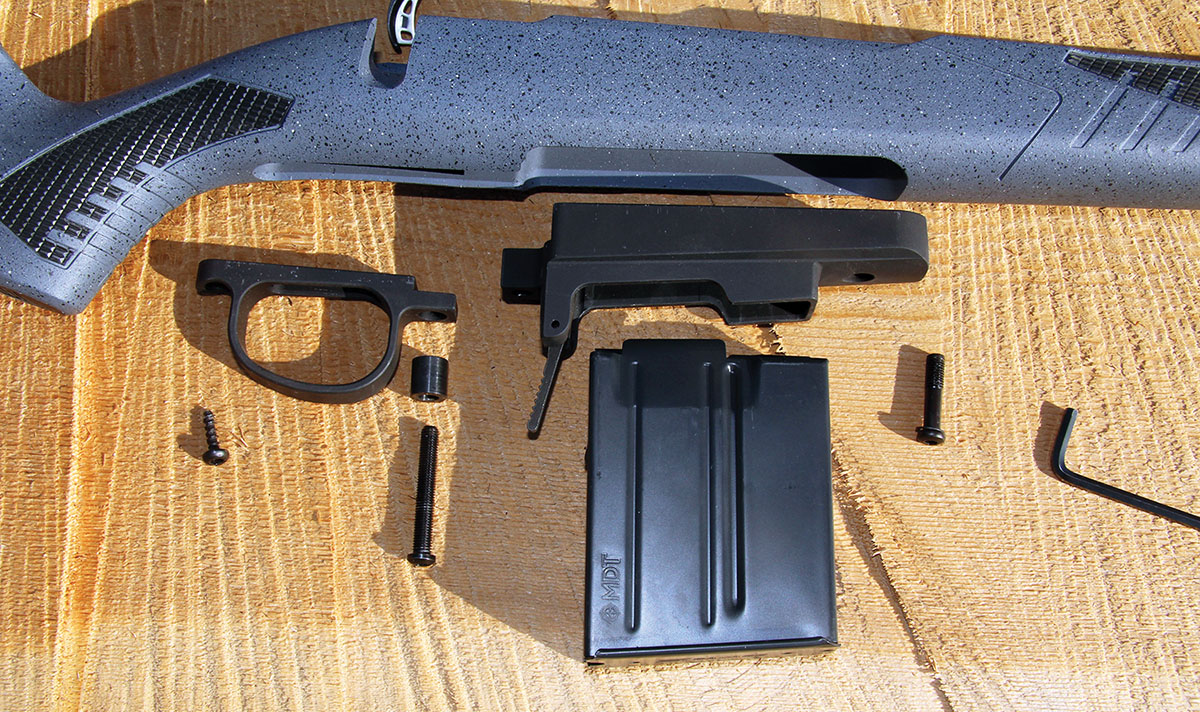
The synthetic stock on my Savage 110 223 Remington left a lot to be desired, so much so that I glass-filled the forend and bedded the action to get it where I wanted it. The synthetic stock on the Carbon Predator is a decided step above. The granite-textured sporter-profile stock is conspicuously stiffer and includes aggressive flutes and rubber inserts to each side of the grip and on the forearm for a firm purchase when wet or while wearing gloves. The grip was ergonomically pleasing, including a subtle palm swell and generous thumb cut that positioned the hand comfortably for shooting. The recoil pad is soft rubber and functional. Sling studs are installed front and rear. The synthetic stock includes an aluminum bedding block, which as we shall see aided in providing excellent accuracy. The stock does not have a hollow sound when rapped sharply like many synthetic stocks.
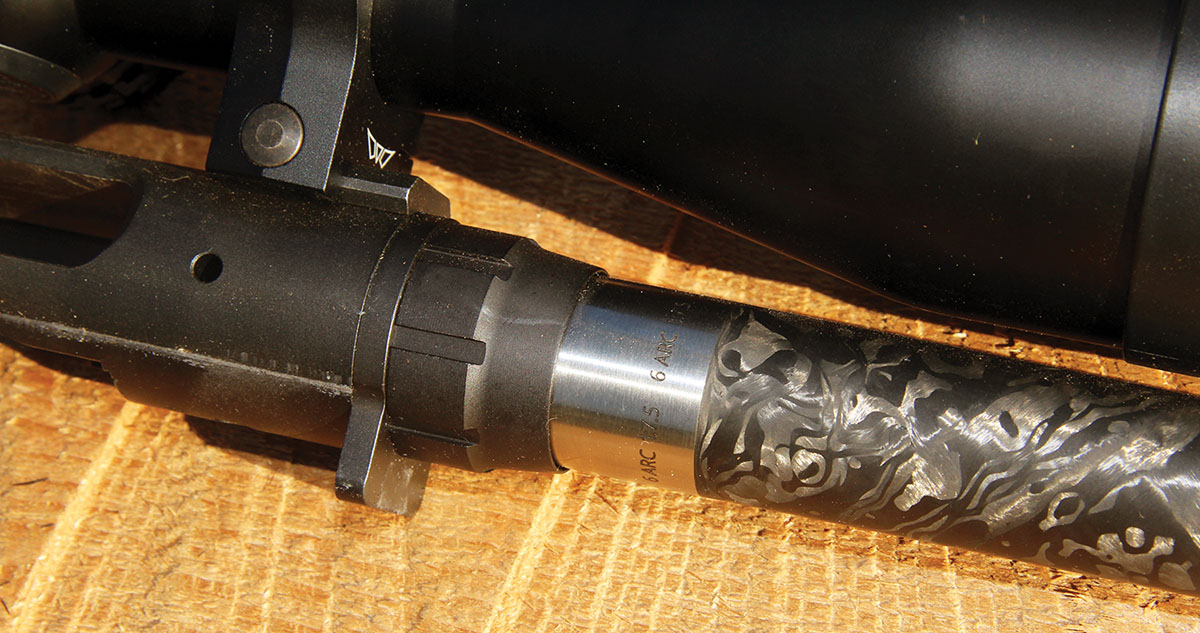
The Carbon Predator is based on the familiar rounded 110 action, which is adequately smooth running, but not as glassy as the average custom action, with a stiff upward cocking mechanism that can take some getting used during fast cycles. The most obvious departure from other 110s I have shot, the Carbon Predator feeds from an AICS-pattern detachable steel magazine. This slides into milled-aluminum bottom metal and includes a relatively long and narrow, spring-loaded lever immediately behind the box. The design functioned well, allowing fast, smooth magazine changes with one hand. The trigger guard is also milled aluminum and treated to the same matte black anodizing, mating to the bottom metal just behind the magazine well. It is secured by a third/middle hex-head bolt, in addition to those at the rear of the trigger guard and front of the magazine well bottom metal.
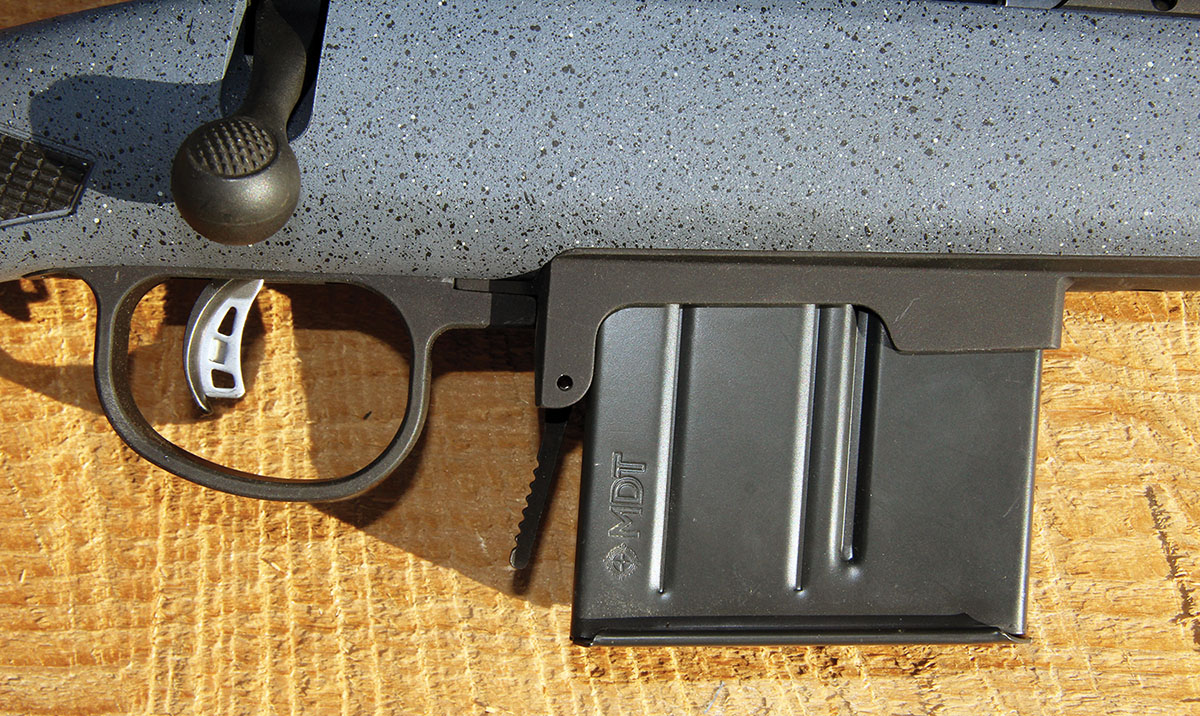
It appears this magazine is a one-size-fits-all 308 Winchester magazine, with polymer inserts added to accommodate the shorter ARC round. The Carbon Predator I tested fed reliably from the MDT magazine, but I have never warmed to this style of steel magazine. I find them tricky to load, and most especially prone to irritating rattling. It might seem odd to admit, but I’d rather see a polymer magazine with more flexible lips that would allow pushing rounds straight into the magazine like typical AR magazines. This might also eliminate some of the irritating rattling.
The round, closed-top carbon-steel action with side ejection port provides a stout arrangement, one of the reasons I think Savages are generally quite accurate. The recoil lug is sandwiched on a ring between the receiver and Savage-style barrel nut. The bolt holds a horizontal two-lug bolt face and the body is conspicuously spiral fluted. The bolt is guided through the action by a two-lug block, located just behind the bolt lugs. It remains in the bolt-lug channels while the bolt lugs rotate into battery when the bolt is turned down. This can give the 110 a somewhat sloppy feel, but is ultimately reliable. This design also allows the bolt face to be easily swapped out for other sizes or replaced. A small plunger-style ejector and snap-over extractor provided somewhat anemic ejection without a vigorous bolt cycle. The bolt is released for cleaning by pulling the trigger and pushing the right-side release tab down simultaneously. The safety is a two-position tang design, a red dot showing when it is pushed forward to fire, and the bolt locked when pulled back and on safe – meaning unloading requires disengaging the safety.
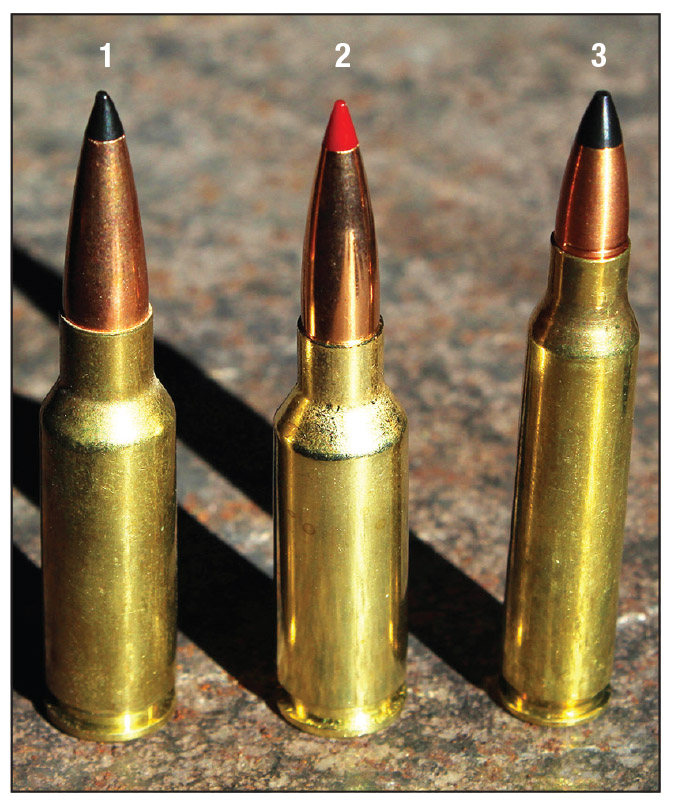
The Carbon Predator holds Savage’s user-adjustable AccuTrigger. This includes a half-moon trigger shoe with a center blade that acts as a secondary safety and allows corporate lawyers to sleep well at night while Savage provides light trigger pulls preferred by savvy shooters. It is apparently adjustable from 1.5 to 4 pounds, though the test rifle’s trigger broke crisply at about 2.5 pounds from the factory, so I found no need to fuss with it.
As mentioned, the stainless-steel core/carbon-wrapped barrel comes from Proof Research, a name that is fairly synonymous with this technology. This barrel includes 1:7.5 twist-cut rifling to handle the longest, highest ballistic coefficient 6mm bullets. This one measured around .75 inch just behind the steel fore collar, tapering minimally from the receiver, and was 18 inches long. The 5⁄8x24 threads made it easy to add my Silencer Co. Harvester EVO suppressor, which proved a great addition. I especially appreciated the smooth step into the threads, which made getting the suppressor threads started nearly automatic. I didn’t know how I felt about the Carbon Predator’s stubby barrel until adding the suppressor, and then the 18 inches seemed natural, creating a 22-inch overall barrel length that remained easy to handle. The rifle arrived with a quality stainless steel thread protector, and without a suppressor, the rifle measured a tidy 38.5 inches long.
The real surprise still lay in waiting, after I’d gathered three Hornady factory loads and loaded some sample handloads that have performed well from previous ARC test rifles. I couldn’t help but notice the tight groups assembled during sight-in, but when the serious bench work began, the three-shot, 100-yard groups that resulted truly made me smile.
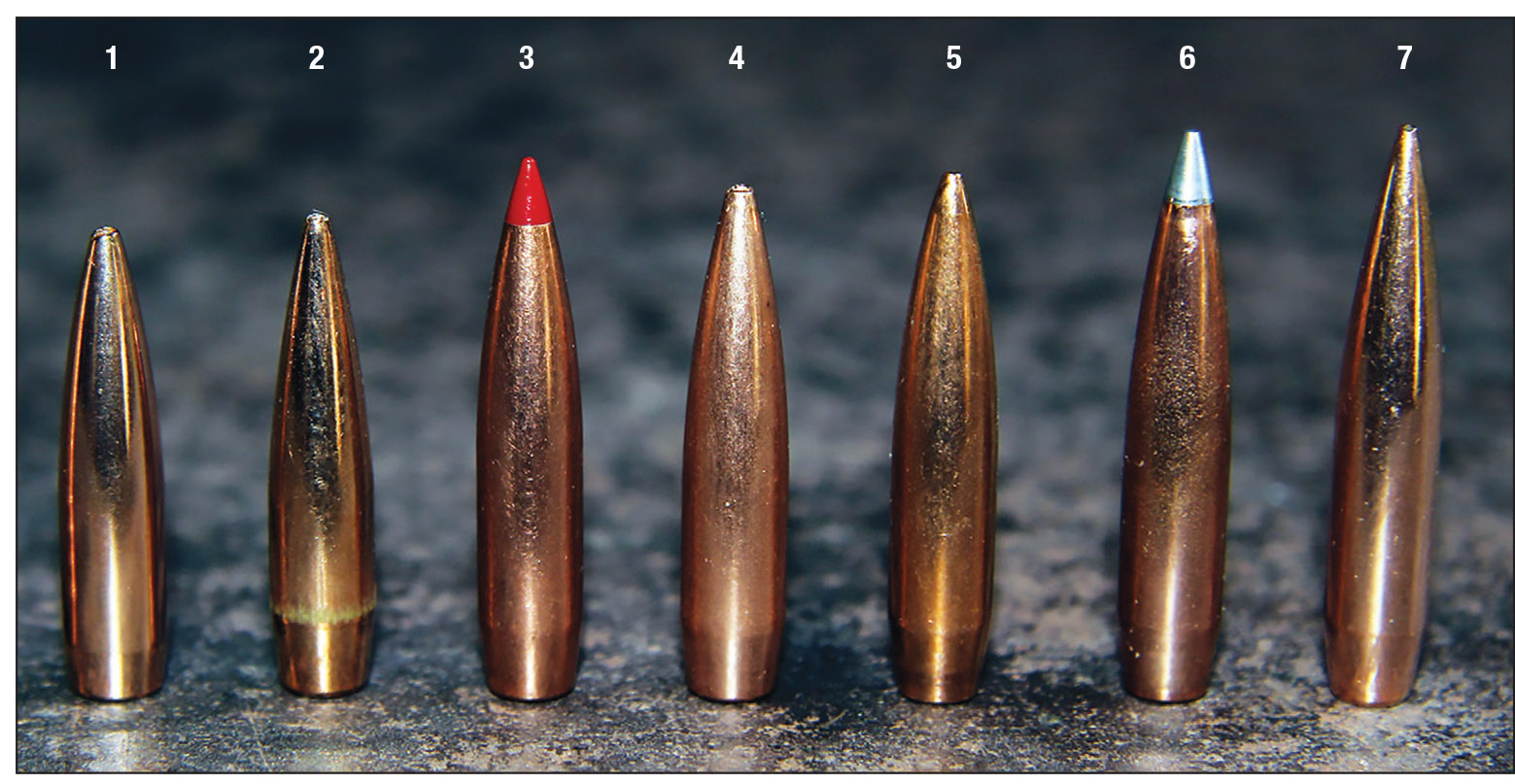
Factory loads consisted of Hornady’s three standard offerings, the 103-grain ELD-X Precision Hunter, 105-grain BTHP Match and 108-grain ELD Match. As far as I’m aware, these and a Black Hills Ammunition 103-grain ELD-X load are the only factory 6mm ARC ammunition available at this time. The Precision Hunter printed into .63 inch at 2,552 fps, the 18-inch barrel down 248 feet per second (fps) from Hornady’s advertised velocity. Black Hills Ammunition assembled a .51-inch group at 2,606 fps, or 144 fps off Hornady’s numbers. Then there was Hornady Match, which put three shots into a single .17-inch (center-to-center) hole at 2,644 fps – and just 106 fps off Hornady’s figures. I hate it when factory ammunition beats my handload results, but that is a testament to the rifle and ammunition.
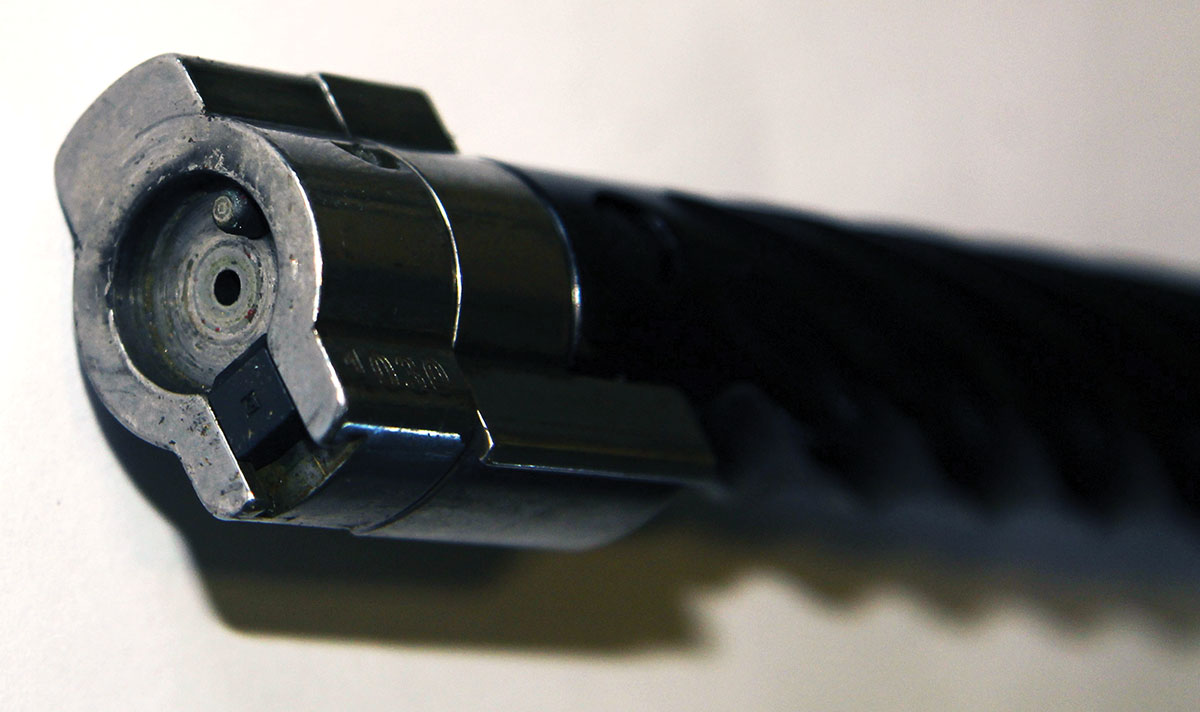
Hunting bullets didn’t do quite as well but offered ample precision for deer or hog hunting at reasonable ranges. Berger’s 95-grain Classic Hunter combined with 31 grains of Alliant Power Pro 2000-MR shot well under an inch at 2,665 fps, while Hornady’s 103-grain ELD-X and 27 grains of Accurate 2520 grouped near ¾-MOA at 2,430 fps (that light load could be pushed 2 or maybe even 3 grains more).
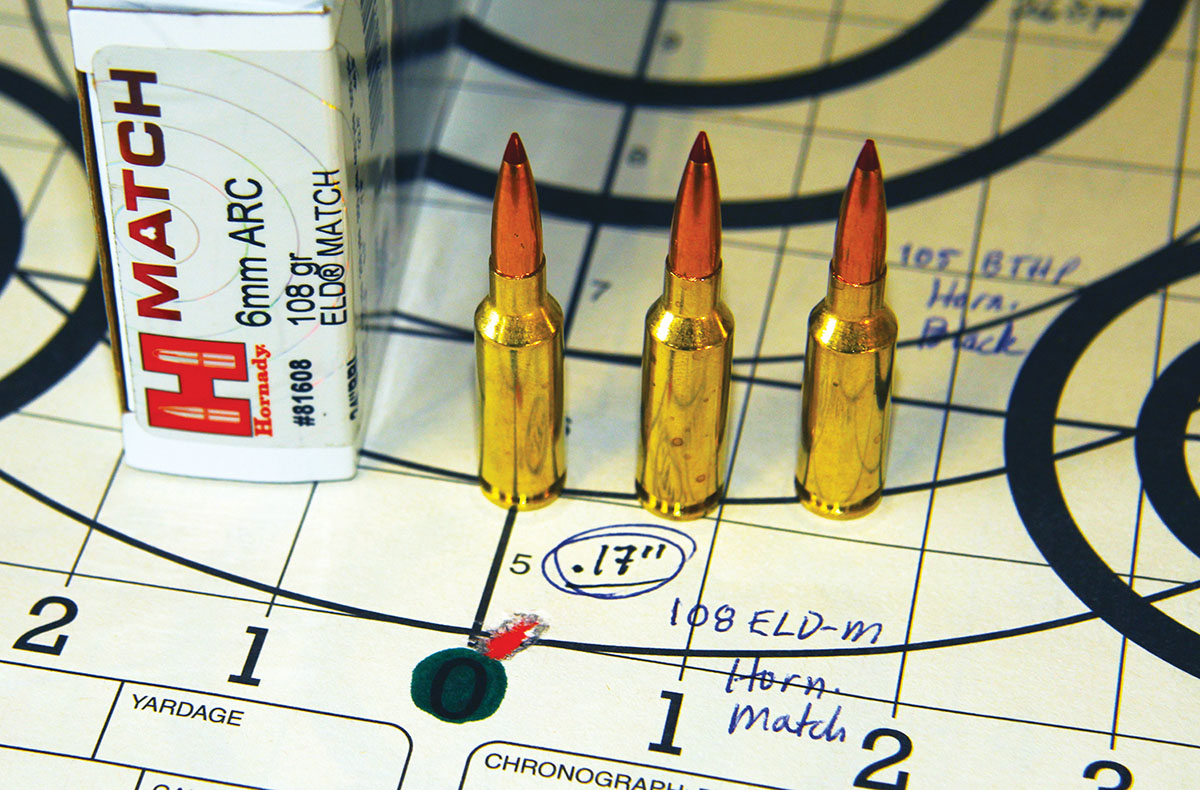
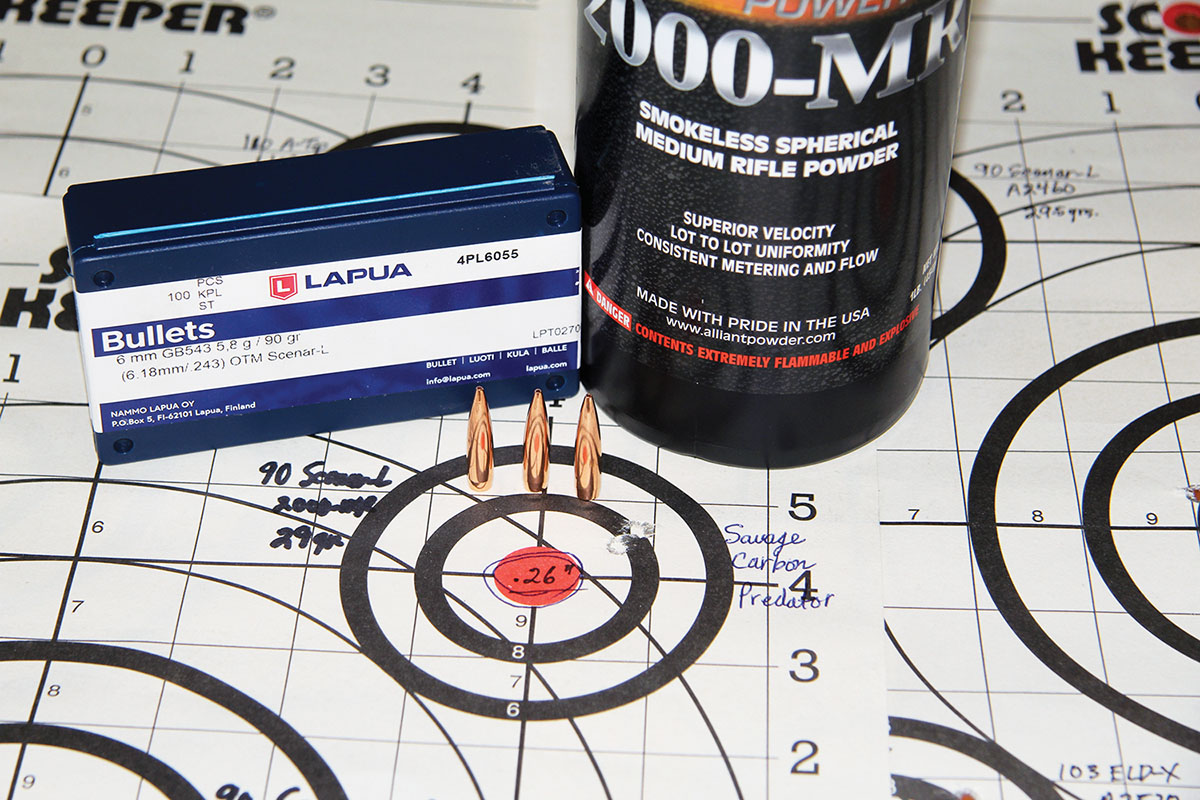
.jpg)


